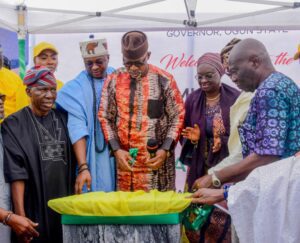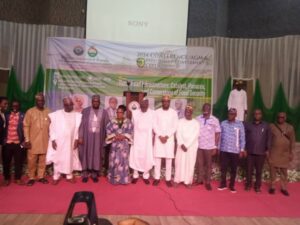
Communicating the viability of your business (4)
By Goke Ilesanmi
Last week, we examined the technical feasibility, another segment of a feasibility study. We said it contains other sub-segments such as production planning; weights of raw materials and ingredients; equipment required; packaging and staffing levels, etc. We explained that once an entrepreneur has got information about potential consumers, their requirements and the likely share of the market for a new product, it is then necessary to assess whether production at this scale is technically feasible. We looked at the sub-segment of the weight of raw materials and ingredients last week. This week, we will examine other aspects of the technical feasibility.
Equipment required
The weight of food that should be processed at each stage is normally calculated in kg per hour. This information then allows the processor to decide what equipment piece is required and the size (or “scale” or “throughput”) that is needed. In doing this, decisions need to be taken on the relative benefits of employing a larger number of workers or buying machinery to do a particular job.
In some enterprise development programmes, there may be wider social objectives of employment creation which may influence such decisions. The decisions on equipment requirements are also influenced by: the cost and availability of machinery; availability of people who are skilled in maintenance and repair; availability and cost of spare parts; and possibilities of local equipment fabrication.
Information on the types and suppliers of equipment is often difficult to obtain, but catalogues and sometimes databases of equipment manufacturers and importers may be available at offices of national and international development agencies, chambers of commerce, university departments, food research institutes, embassies of other countries and trade or manufacturing associations.
Unsatisfactory raw materials depend on source and agreements with suppliers and do not include evaporation losses. It is preferable wherever possible to buy equipment from local suppliers and fabricators because servicing and obtaining spare parts should be faster and easier.
Packaging
Similar considerations apply when ordering packaging materials as there is a very wide range available and there are a number of considerations that should be taken into account by the producer. These include the technical requirements of the product for protection against light, crushing, air, moisture etc.; the promotional and marketing requirements and the relative cost and availability of different types of packaging.
Selection of packaging materials frequently causes the largest problems for small producers and is often the main cause of delay in getting a business established. Professional advice should be sought from a food technologist or in some countries, packaging specialists or agents of packaging manufacturers.
Staffing
Decisions on the number and types of workers required to operate the proposed business are taken in conjunction with decisions on equipment procurement. It is possible to break down the production into different stages and then decide the number of people that will be needed for each stage of the process. It is important also to include work such as store management, quality assurance and book-keeping when planning employment levels.
In fruit and vegetable processing, for instance, each day’s work will initially involve preparation of the raw materials and then move through processing to packaging. It is possible to have all workers doing the same type of activity throughout the day, but it is often more efficient to allocate different jobs to each worker as the day progresses. A convenient way of planning this is to draw an activity chart which shows the type of work that is to be done each hour during the day, the number of people involved in each activity and the sequence of work that individuals will do.
Activity chart is useful for assessing the time required to complete each stage of the process and for thinking through the problems that are likely to occur. When production begins, it can be used as a basis for training in each job and it should be constantly reviewed to optimise production efficiency.
In summary, the technical part of a feasibility study involves taking information about the expected demand from the market survey and calculating the process throughput required to meet that demand. This can then be used to decide the type of equipment, the level of staffing and the amounts of raw materials, etc.
Financial feasibility
As regards financial feasibility, the sub-concepts such as start-up costs, operating costs, income and profit, financial planning, etc. will be considered here. Having completed the study of technical feasibility, the entrepreneur should then have sufficient information to determine the costs that are likely to be involved in production.
Additionally, the market survey will have supplied information about the sale price that could be achieved for the new product. The entrepreneur is therefore in a position to calculate the expected income and expenditure and hence the gross profit that can be achieved.
To be continued
PS: For those making inquiries about our Public Speaking, Business Presentation and Professional Writing Skills programme, please visit the website indicated on this page for details.
GOKE ILESANMI (FIIM, FIMC, CMC), CEO of Gokmar Communication Consulting, is an International Platinum Columnist, Professional Public Speaker, Career Mgt Coach and Certified Mgt Consultant. He is also a Book Reviewer, Biographer and Editorial Consultant.
Tel: 08055068773; 08187499425
Email: [email protected]
Website: www.gokeilesanmi.com.ng
.



